5 Things You Can Learn From Happy Gilmore
Some useful lessons from Adam Sandler's brilliant golf film
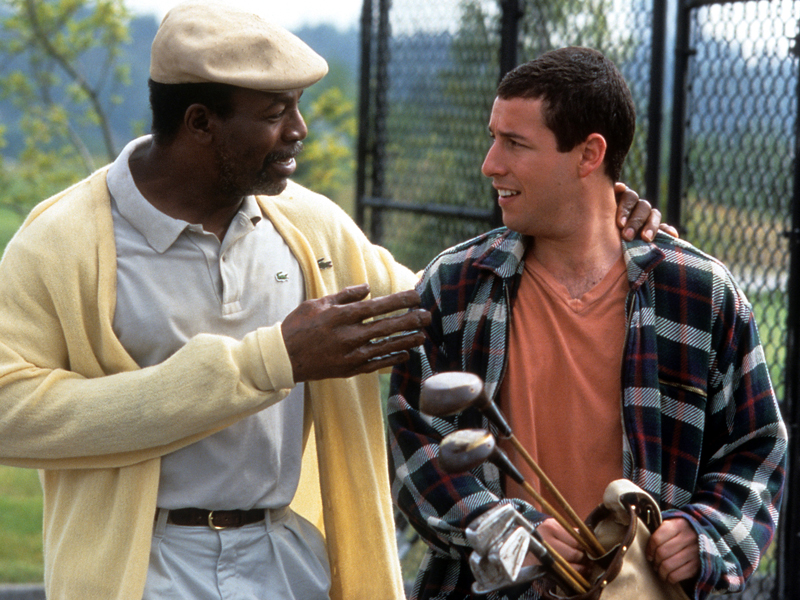

We take a look at five of the most useful lessons to take away from Adam Sandler’s brilliant golf film Happy Gilmore.
5 Things You Can Learn From Happy Gilmore
Most people think Happy Gilmore is a comedy taking a shot at the stuffy nature of golf by placing a central character with no airs and graces, nor prior experience of the sport, in the golfing spotlight.
But, in fact, Happy Gilmore is a cleverly veiled instructional video giving a huge amount of meaningful insight into golfing technique, strategy and temperament.
Here are 5 things you can learn from Happy Gilmore:
Equipment lesson
The analogy of a bad workman blaming his tools applies to almost all golfers.
Get the Golf Monthly Newsletter
Subscribe to the Golf Monthly newsletter to stay up to date with all the latest tour news, equipment news, reviews, head-to-heads and buyer’s guides from our team of experienced experts.
“The ball was scuffed… I need new shafts… This is old technology… These shoes have lost traction…”
Nonsense.
Take a look at Happy’s gear – An old set of his grandfather’s spanners with dirty sports socks for head covers, desert boots, no glove, lumberjack shirt (open,) pond balls, biscuits for markers…
And he is able to make it as a professional golfer with that kit!
He wins The Tour Championship for goodness sake!
So, basically, what Sandler is trying to convey is that you, just like Happy, are capable of producing your best golf without splashing thousands on the latest equipment.
He’s tackling materialism in general but also sending a strong message about the importance of removing excuses from your game and concentrating on what you can control on the course – your technique and attitude.
Technique and attitude
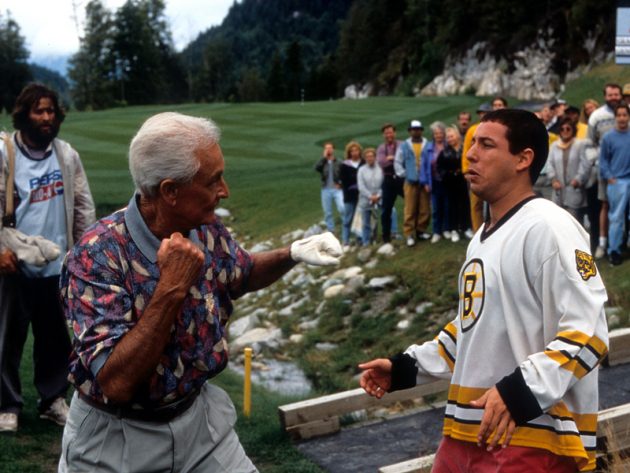
Obviously Happy is a little lacking in both these departments but this was a deliberate move by Sandler to help improving golfers by showing them just what not to do:
Don’t try and knock the cover off the ball.
Don’t grip your putter like a hockey stick.
Don’t beat up onlookers if you play a bad shot.
Don’t hold up the group behind while you direct a four-minute verbal tirade at your ball, accusing it of being “too good for its home.”
These are all important pieces of advice that Sandler delicately weaves into the script, providing clear guidance to the aspiring golfer.
The importance of short game
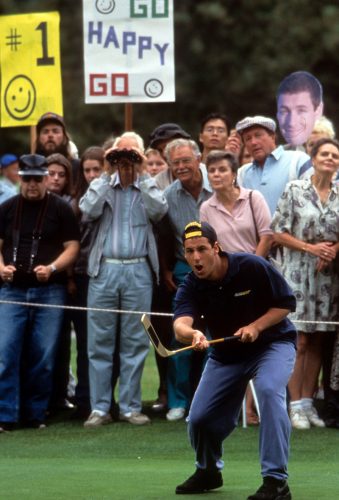
This in fact, rather than the quest to save Grandma’s house, is the central theme of the film.
Yes, Happy can smack a ball 400 yards but it’s not until “somebody learns how to putt” that he can really make it at the top level.
Sandler was very aware at the time of the number of youngsters obsessed with “hitting bombs” who were neglecting their pitching and putting.
Happy Gilmore is fundamentally a salutary tale, highlighting the importance of the short game in golf.
The happy place
Happy plays his best golf when he visits a surreal world featuring scantily clad women, his grandma on a “fruity” and a man in a cowboy outfit riding a tricycle.
This is a very effective, if slightly unusual way of demonstrating the importance of mental health in golf.
It’s important for all golfers to have a positive attitude if they’re to enjoy success on the fairways.
Finding the right state of mind could well be achieved by having a go-to “happy place.”
It will, of course, be different for all of us but the message Sandler is putting across in the film is:
If your “happy place” resembles Happy’s in any way, then it might be time to seek professional help.
It’s clearly not all in the hips
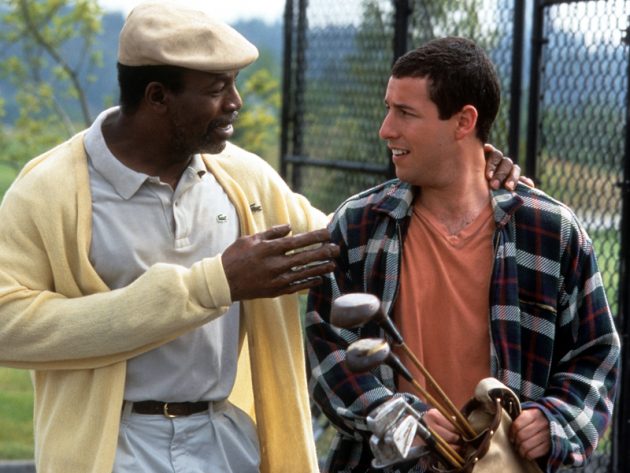
Chubbs Peterson is Happy’s coach and mentor and he plays a key role in getting Happy into the game.
But, if we’re being brutally honest, he’s pretty useless on the technical side of the sport.
In fact, Sandler included the character of Peterson in this film to warn golfers of the perils of maintaining total faith in a single instructor.
Yes, Chubbs has some decent ideas (see "the happy place" above).
But the lateral hip movement he encourages will promote a damaging and power-sapping sway.
And simply “tapping it in” will not result in the fluid and rhythmical putting stroke demanded by today’s fast greens.
The lesson here is, although Chubbs is a nice guy and his heart’s in the right place, he’s lost touch with the most up-to-date thinking in technical golf instruction.
It’s no coincidence that Happy starts to play his best golf when Chubb’s untimely death forces them to part ways.
There is then, a great deal that golfers can learn from Adam Sandler’s excellent instructional video “Happy Gilmore.”
Not only does it provide clear guidance on what not to do on course, it also conveys a strong message on the importance of the short game.
Along with those pointers, it also delivers messages on the propagandas of materialism and the issues of mental health in sport and more generally.
Five stars.

Fergus is Golf Monthly's resident expert on the history of the game and has written extensively on that subject. He has also worked with Golf Monthly to produce a podcast series. Called 18 Majors: The Golf History Show it offers new and in-depth perspectives on some of the most important moments in golf's long history. You can find all the details about it here.
He is a golf obsessive and 1-handicapper. Growing up in the North East of Scotland, golf runs through his veins and his passion for the sport was bolstered during his time at St Andrews university studying history. He went on to earn a post graduate diploma from the London School of Journalism. Fergus has worked for Golf Monthly since 2004 and has written two books on the game; "Great Golf Debates" together with Jezz Ellwood of Golf Monthly and the history section of "The Ultimate Golf Book" together with Neil Tappin , also of Golf Monthly.
Fergus once shanked a ball from just over Granny Clark's Wynd on the 18th of the Old Course that struck the St Andrews Golf Club and rebounded into the Valley of Sin, from where he saved par. Who says there's no golfing god?
-
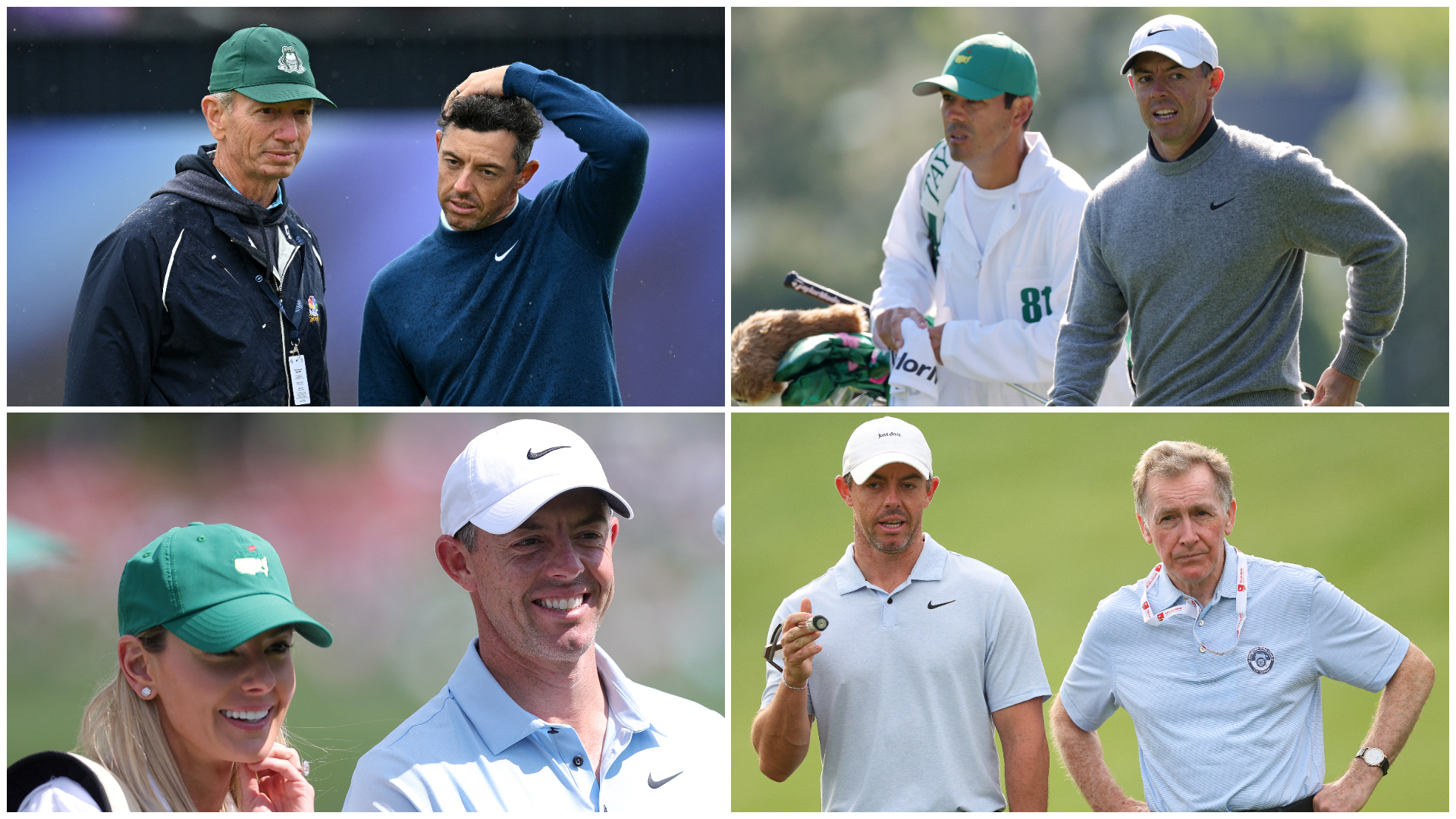 Who Is On Rory McIlroy’s Team? Coaches, Caddie, Wife And More
Who Is On Rory McIlroy’s Team? Coaches, Caddie, Wife And MoreRory McIlroy is one of the game’s biggest stars, but who are the key figures behind the scenes helping his career soar while he keeps his feet on the ground?
By Mike Hall Published
-
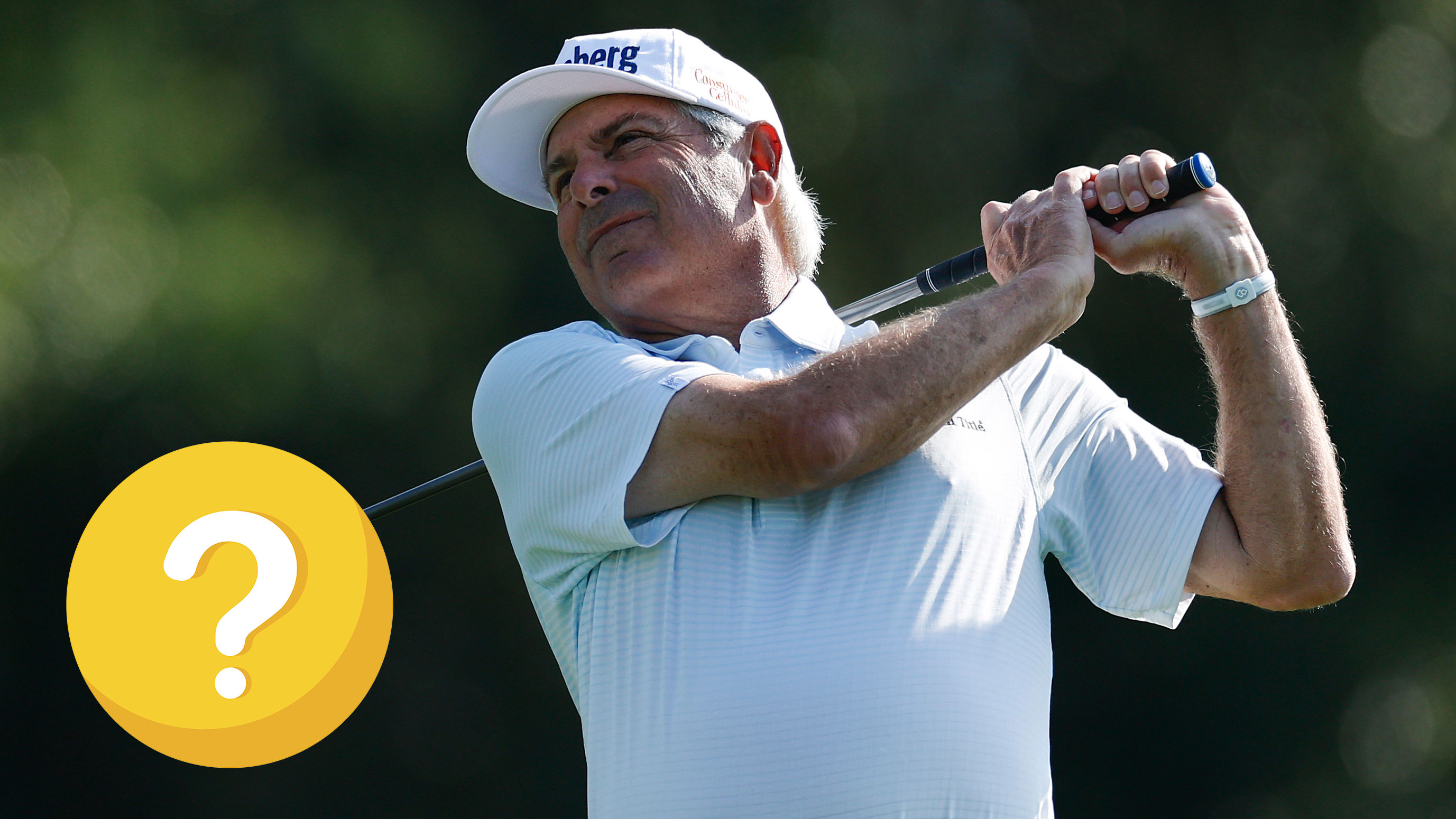 Real Players Use Long Irons, Right? Well, Fred Couples Nearly Made The Cut At The Masters At 65 Years Old, And His Longest Iron Is A…
Real Players Use Long Irons, Right? Well, Fred Couples Nearly Made The Cut At The Masters At 65 Years Old, And His Longest Iron Is A…Both Couples and Bernhard Langer turned back the clock brilliantly over the first two days at Augusta National and did so with some interesting bag setups.
By Joe Ferguson Published